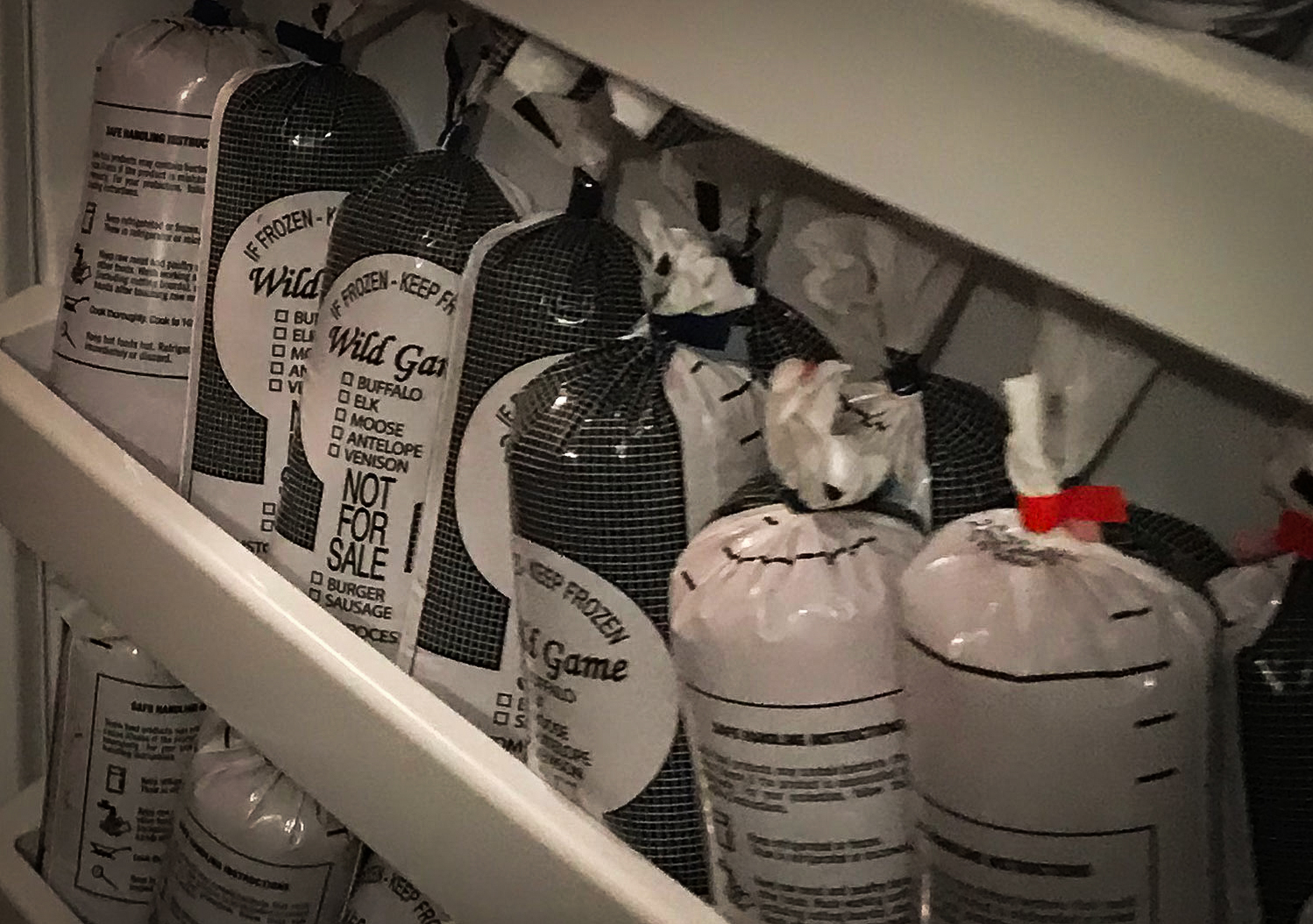Packaging Wild Game
Few things generate more pride for a hunter than proper meat care. Out of the freezer it comes—ready to prepare and serve.
Cut and Trim
Most big game animals are boned out to save freezer space and reduce gamey flavours. Trim excess fat and silverskin from muscle groups separated on an animal. Deer fat is tallow and better suited for making soap or candles, since it can have a strong odour and flavour.
Cut steaks and roasts from the prime muscles, then trim the remainder for the grinder. Stew meat, shanks, flank steak, and neck roasts are all options, but these muscles and cuts work well for grind or burger.
Burger Bags
White burger bags made of polyethylene protect meat in the freezer by preventing light exposure, which helps prevent freezer burn. Bags are available to store 1, 2, 3, 5, and even 10 pounds of meat. Smaller bags are meal-sized portions, while the larger ones store ground meat for processing into sausage or other products.
A stuffing tube or nozzle on a grinder fills your bags without air space. Specialty tape dispensers can seal the burger bags tight at the neck, leaving packages airtight and easy to mark. Stand the burger bags up to freeze, or they can leak fluid or change shape before frozen. After they are frozen, they can be stacked or stored however your wish for convenience.
Plastic Wrap and Butcher Paper
Plastic wrap and freezer paper are great options for packaging burger. As the first layer, resonite or plastic wrap helps push air out of the meat. Pulled tight, the plastic and forces air out before stretching and sealing the ends.
Use waxed butcher's paper to wrap and seal meat already in plastic wrap. Start from a corner to roll tight, tucking and folding the other corners in as it rolls up. Tape the package shut to prevent air from getting through seams or corners.

Vacuum or Chamber Sealer
Many hunters use vacuum and chamber sealers for packaging meat airtight into conveniently sized portions. Read the instructions and watch for any packages that don’t seal properly—you’ll have to redo them.
Date and Label
At any one time, hunters often have packaged meat from several animals in the freezer. That’s why it’s essential to identify the animal when harvested as well as the cut of meat on each package—label with the year and date, species, cut, and amount.
Example: Nov. 15, 2021—Whitetail Doe #2—Top Sirloin Steak (2)
Although it’s a little extra work, you’ll be thanking yourself later when you’re standing in front your freezer deciding what tasty cut you want to cook up for the table!





